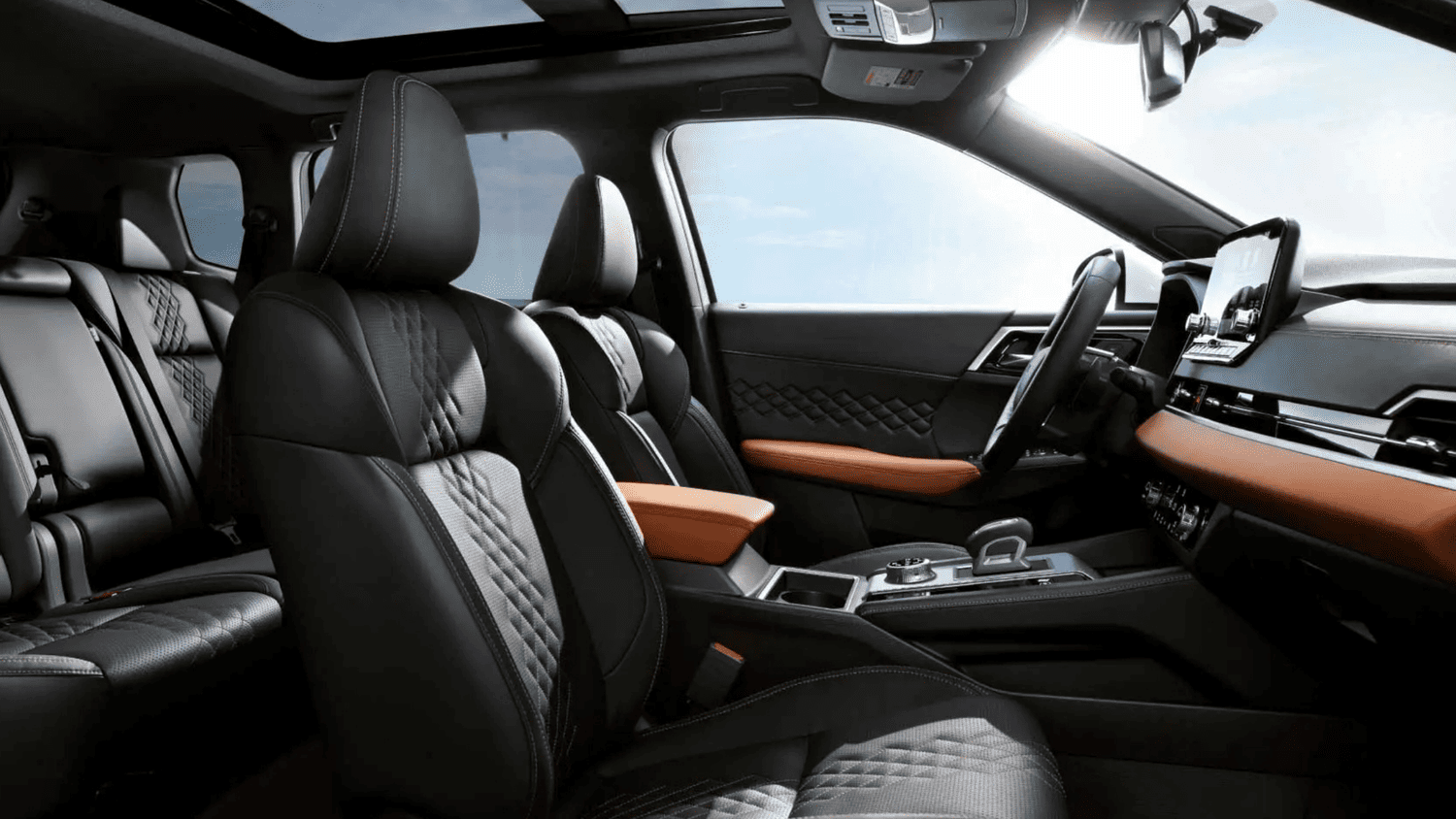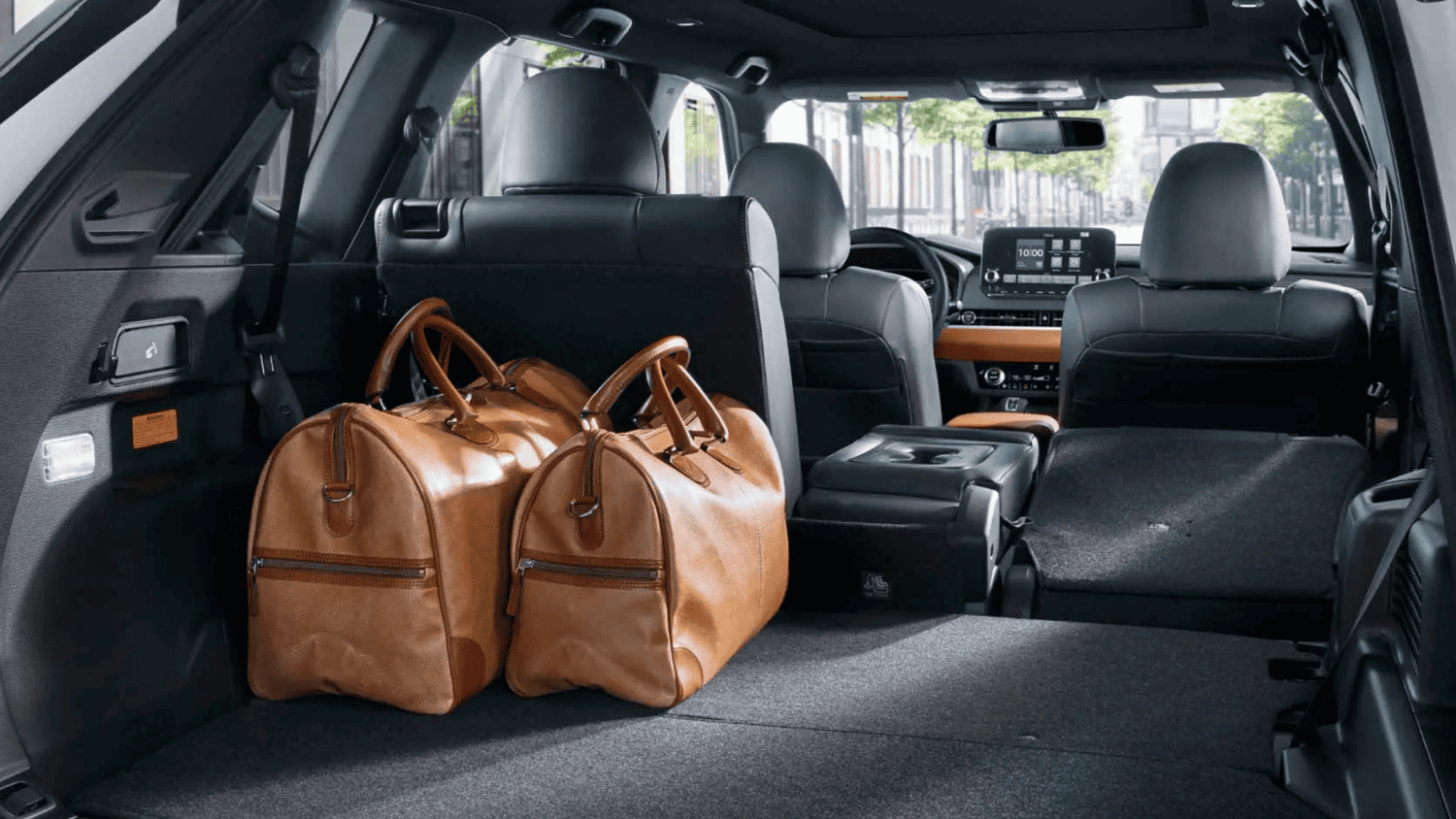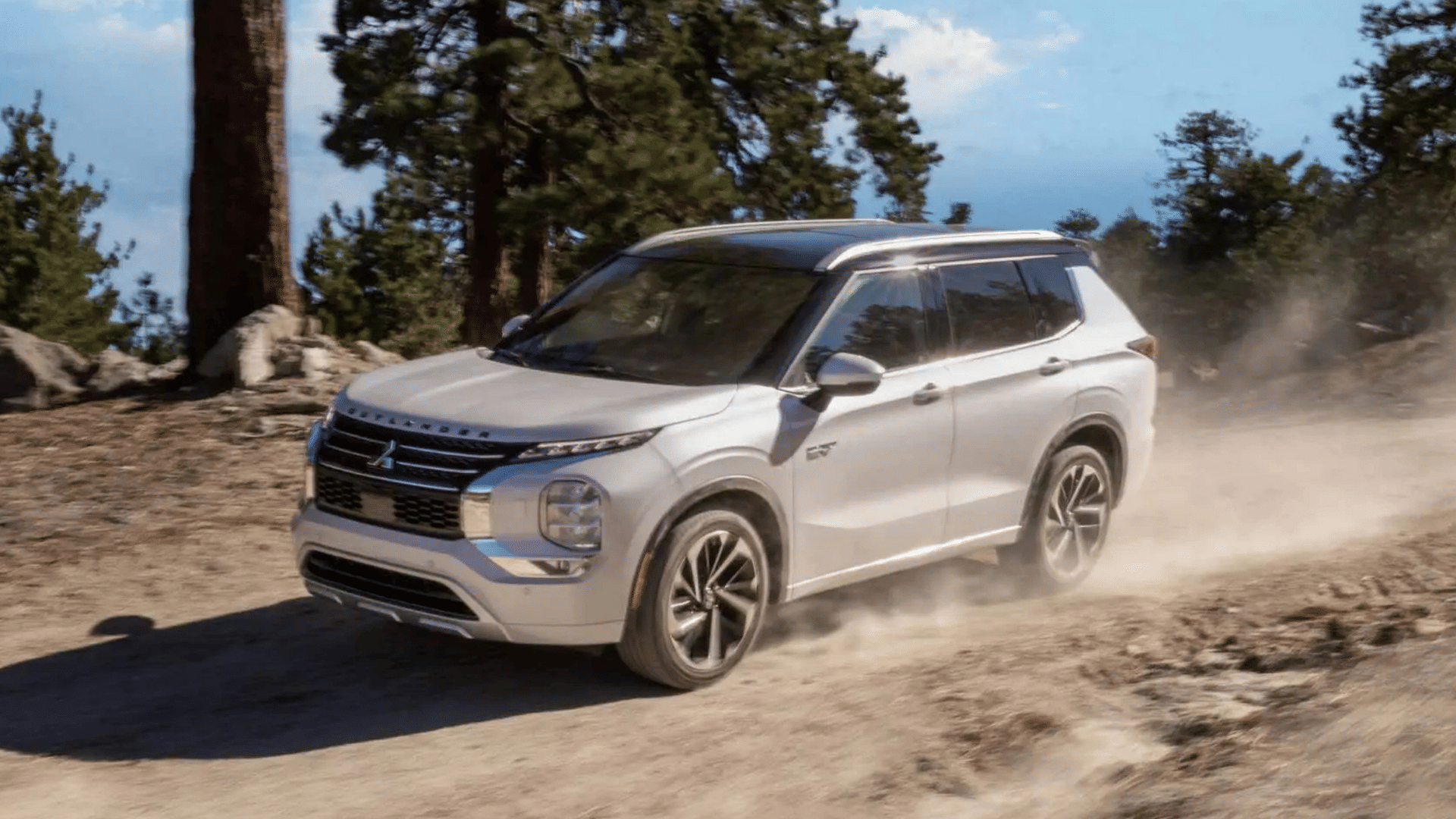2025 Mitsubishi Outlander PHEV near Lakeland, FL
The 2025 Mitsubishi Outlander PHEV is a midsize plug-in hybrid SUV that integrates electric vehicle engineering with internal combustion reliability. It is designed to support both urban commuting and long-distance driving by utilizing a dual-source powertrain. Built on Mitsubishi’s engineering foundation of efficiency and durability, this model is equipped with a suite of performance, control, and safety systems that function cohesively across diverse road conditions.
Advanced Hybrid Drivetrain with Electric Bias
The 2025 Mitsubishi Outlander PHEV uses a series-parallel hybrid system that consists of a 2.4-liter MIVEC DOHC 4-cylinder gasoline engine, a front-mounted electric motor, and a rear-mounted electric motor. These are paired with a 20.0 kWh lithium-ion battery pack.
The internal combustion engine primarily operates to support the battery and electric motors during high-load conditions or extended travel. The front and rear electric motors work independently to supply power to their respective axles. When operating in full electric mode, the vehicle produces zero tailpipe emissions and draws entirely from battery reserves. In hybrid mode, it balances electric motor output and engine operation to maximize efficiency.
The system offers an estimated all-electric range of approximately 38 miles under standard driving conditions. Combined driving range can reach approximately 420 miles, depending on terrain and energy use. Regenerative braking functions across selectable levels, allowing the driver to adjust the intensity of energy capture from deceleration events.

Super All-Wheel Control with Active Yaw Technology
Mitsubishi’s Super All-Wheel Control (S-AWC) is designed to increase traction stability across variable road surfaces. The system coordinates the vehicle’s twin electric motors with the all-wheel drive framework, allowing real-time torque vectoring across the front and rear wheels.
One key element is Active Yaw Control (AYC), which modulates individual wheel braking to distribute torque laterally. Under acceleration, S-AWC balances torque between axles to maintain forward stability.
Drivers can select from several drive modes. Each mode modifies how the drivetrain responds to surface feedback and driver inputs. This allows the vehicle to maintain consistency of movement over pavement, gravel, wet roads, and snow. The integration of dual electric motors in the AWD system enables instantaneous torque delivery, which improves response times compared to mechanical-only systems.

Battery Management and Charging Systems
The 2025 Mitsubishi Outlander PHEV is equipped with three charging interfaces to support various power environments. Standard Level 1 charging uses a 120V AC outlet and is suitable for overnight home recharging. Level 2 charging operates on a 240V system and significantly reduces recharge times, making it ideal for home installations or public charge stations.
DC Fast Charging capability is available and can replenish the battery up to 80 percent in about 25 minutes under optimal conditions. The onboard system automatically manages current flow to protect the lithium-ion battery during both charging and discharging cycles.
Temperature management systems are integrated into the battery design to optimize performance in varying climates. The vehicle monitors battery state, estimated range, and charge status via the digital instrument panel and infotainment system.
Cabin Configuration and Driver Controls
The interior of the 2025 Mitsubishi Outlander PHEV is structured to support both driver utility and passenger comfort. It features three rows of seating with capacity for up to seven occupants, depending on trim selection. Rear seatbacks are split-folding to provide expanded cargo space when needed.
The vehicle uses a 12.3-inch full digital driver display to present powertrain data, speed, range estimates, and active safety system statuses. A 9.0-inch center-mounted infotainment system serves as the control interface for navigation, media, and smartphone integration. Both Apple CarPlay® and Android Auto™ are supported.
Climate systems include a tri-zone automatic configuration that permits independent temperature control for the driver, front passenger, and rear seating areas. Sound insulation materials in the cabin structure contribute to reduced noise transmission from the road and powertrain.
Safety Framework and Driver Assistance Technologies
The 2025 Mitsubishi Outlander PHEV incorporates multiple safety systems designed to function continuously and autonomously. Forward Collision Mitigation uses radar and camera inputs to identify obstacles, including pedestrians, and can apply automatic braking if the driver does not respond. Blind Spot Warning provides visual alerts in the mirrors when another vehicle is present in adjacent lanes. Rear Cross Traffic Alert monitors perpendicular traffic during reverse maneuvers.
The vehicle also integrates MI-PILOT Assist™, which includes Adaptive Cruise Control with Stop & Go functionality. Lane Keep Assist and Lane Departure Prevention provide active steering input to correct unintended lane drift. Traffic Sign Recognition reads posted signs and displays the current speed limit in the driver’s display.
Trim Differentiation and Technical Equipment
The 2025 Mitsubishi Outlander PHEV is available in multiple trim levels, each designed with specific functional upgrades. The entry-level trim provides essential features such as full hybrid functionality, S-AWC, and standard safety systems. As the trim level increases, the vehicle adds enhanced materials, advanced interface systems, and additional driving assist functions.
The SEL and SEL Premium trims incorporate more advanced interior features, such as upgraded seating materials, power-adjustable seats with memory functions, and enhanced audio systems. Some trims offer second-row seat heating, steering wheel heating, and massaging driver’s seat technology. The Platinum Edition trim includes exclusive styling elements and additional structural upgrades.
Across all trims, the core hybrid system, S-AWC, and primary safety systems remain consistent, ensuring performance integrity.
Schedule a Test Ride at Brandon Mitsubishi
To experience the full range of the 2025 Mitsubishi Outlander PHEV and its capabilities, schedule a test drive and evaluate the hybrid powertrain, dual-motor all-wheel drive, and integrated safety technologies. The model’s adaptive drivetrain, regenerative charging, and driver assistance systems are designed to work as a cohesive unit. Visit Brandon Mitsubishi near Lakeland, FL, to examine its engineering firsthand and assess its suitability for your use case.

